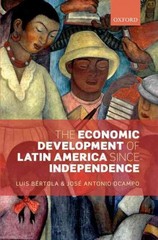Question
Question 2 Consider a household facing the following problem: max U (c, h) = 2 ln c + (1 ? 2 ) ln(1 ? h)
Question 2
Consider a household facing the following problem:
max U (c, h) = 2 ln c + (1 ? 2 ) ln(1 ? h)
subject to
c,h 5 5 c = wh,
where c denotes consumption, h hours worked and w is the wage.
- Describe the trade-off that the household faces and solve for hours worked, i.e. labour
- supply.
- Suppose that the government introduces a proportional tax, ?, on labour income so that the budget constraint becomes c = (1 ? ? )wh. The tax revenue will be used to finance the restoration of old castles in the south of Sweden. How is the individual's labour supply affected? Motivate your answer mathematically.
5
c. Suppose instead that the tax revenue is returned to households as a lump-sum transfer. Specify the government's budget constraint and explain how labour supply is affected by the tax.
- Maintaining the assumptions in question c, suppose that the tax rate is set to ? = 0.3. Compute labour supply.
- Suppose that the tax rate is lowered from 0.3 to 0.2. Compute the change in labour supply in percentage terms.
Question 3
Consider the AS-AD model discussed in Lecture 5. The AD curve is given by:
Y ?t = ? ? ??(?t ? ? ?), (4)
where Y ?t is short-run output, ?t is current inflation and ? ? is an inflation target pursued by the central bank. The AS curve can be written:
?t = ?t?1 + ?Y ?t + ?. (5)
- Explain where the two equations come from and explain the intuition behind them.
- How would you interpret ? and ?? Which values must they assume in a steady-state, i.e. in the long run.
- Analyse the effect of making the inflation target more ambitious, i.e. the effect of lowering ? ?. Illustrate your answer in a diagram and explain the intuition.
- Suppose that the demand for domestic goods decreases abroad, so that the export share of potential output temporarily decreases. Analyse the effects on inflation and short-run output using a diagram.
Question 4
There are different views on the causes of inflation. While the standard view is that inflation is a monetary phenomenon, others emphasise the impact of fiscal policy.
- Explain how inflation is related to the money supply according to the quantity theory of money. Motivate your answer using equations.
- Explain how inflation may be triggered by fiscal considerations, e.g. a desire to increase government spending. Motivate your answer by formulating the government's budget constraint.



Step by Step Solution
There are 3 Steps involved in it
Step: 1

Get Instant Access to Expert-Tailored Solutions
See step-by-step solutions with expert insights and AI powered tools for academic success
Step: 2

Step: 3

Ace Your Homework with AI
Get the answers you need in no time with our AI-driven, step-by-step assistance
Get Started


